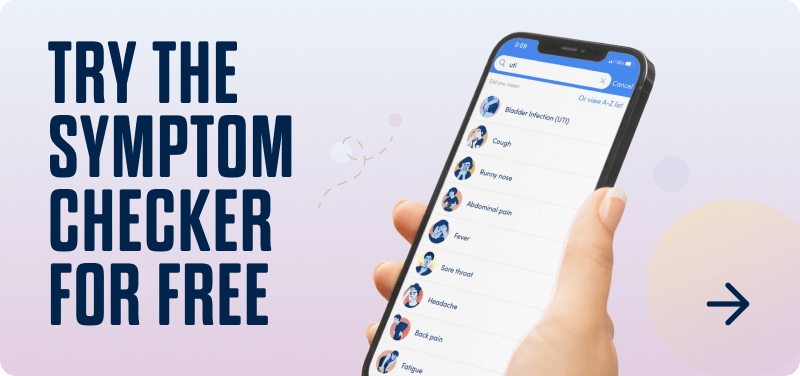Your eyes are one of the most important parts of your body.
They are the first things you open and use when you wake up in the morning, and any pain or discomfort you feel in your eyes can affect the rest of your health, lifestyle, and routine.
In this article, we’ll explore some main causes of eye pain and also look at ways to treat and prevent pain in the eyes.
What Is Eye Pain?
Also known as ophthalmalgia or ophthalmodynia, these are any pains that occur in the eye, around the eye, or other conditions that stem from eye pain.
Almost everyone will suffer from pain in their eyes at various points in their lives, but it is rarely ever serious.
Eye pains can be uncomfortable and cause a hindrance to your life.
They can happen in the form of itchiness, soreness, redness, stabbing pains, burning sensations, and even prolonged throbbing.
It is also easy and common to confuse eye pain with other symptoms and ailments, such as migraines, headaches, sinus pain, earaches, and toothaches.
Consult a medical professional for an accurate diagnosis of your symptoms.
Where Is the Pain?
Different parts of your eyes will hurt, depending on the cause, and the underlying issue will result in different types of pain as well. While your cornea itches, your eyelids might throb.
While one area is inflamed, your tears might be overstimulated by other causes too.
Some afflicted areas of eye pain to consider include:
- Eyelids: Pain, swelling, or inflammation on the eyelids can be painful. Sometimes you might notice a throbbing sensation coming from the top, bottom, or both eyelids as well.
- Cornea: This is your eye’s front window and it can get sore and painful at times.
- Iris: The colored part of your eye with a pupil in the middle can get swollen and inflamed causing you pain. It can also lead to headaches and light sensitivity.
- Nerves: Your optic nerves are what send vision information from your eyes to your brain. It can feel like a throbbing ache behind your eye if these nerves become inflamed.
See a doctor online.
Start my visitDiagnosis
An eye specialist or medical provider will need to conduct a thorough examination to diagnose the cause of your eye pain.
This will include looking into your eyes using a flashlight and other tools, asking you to do simple reading tests, conducting a light sensitivity test, checking the rest of your head and body, and asking you some questions about your diet and lifestyle.
Common Causes
The most common causes of eye pain are a temporary strain on the eyes or the fact that something small is trapped, like an eyelash or dust.
In most cases, eye pain will subside on its own.
Other common causes of eye pain include:
Conjunctivitis
Also called pink eye, conjunctivitis starts with irritation and pain in the eyes.
Conjunctivitis is caused by allergies, a virus, or bacterial infection. While the condition is painful, uncomfortable, and looks unpleasant, it is usually easily treated.
Contact lenses
It can take some time for new contact lens wearers to adjust to a foreign body entering the eyes.
While this can cause a bit of pain and itchiness at first, it will subside in time.
Contact lenses should not cause eye pain and if they do, then consult a medical provider for advice.
In many cases, it might not be the actual contact lens that is causing you pain, but an improper fit or some dust or allergens that have gotten stuck to the surface of the lens.
Remember to practice good hygiene when handling contact lenses, your eyes, and your face, and always cleanse with clean, cool water.
Corneal abrasions
A scratch on the eye might seem like a small issue, it can be quite painful since the eye is a very sensitive part of the body.
Corneal abrasions can happen any time and to anyone from a fingernail, papercut, splinter, or even rubbing when any dust or dirt is in the eye.
Styes
A stye appears like a raised area or a pimple on the base of your top or bottom eyelashes.
While many are small and harmless, they can be quite painful and give the appearance of a swollen eye.
Styes typically subside in time on their own.
Glaucoma
A damaged optic nerve can lead to glaucoma, and it can be quite painful.
Other symptoms of glaucoma to watch out for include blurred and hazy vision, nausea and vomiting, tenderness and soreness around the eye area, and headaches.
Treatment Options
Depending on the cause of your eye pain and if you are suffering from additional symptoms, there are many treatment options available to soothe it.
In most cases, simply leaving your eyes alone to recover will help.
At-home care
If you feel like your eyes are hurting, throbbing, or itching, the first thing to do is close your eyes and rest.
It could be that your eyes are stressed and strained and just need a break from screens, strong lights, and other elements.
Use a soft and cooling eye patch, keep your eyes closed, and take a break from screens for a few days.
Warm compresses
For swelling around the eye area, a warm compress will help soothe it.
It can also help ease a black or blue eye bruise.
Your healthcare provider may also tell you to treat blepharitis or a stye with warm, moist towels.
Glasses
If your eye pain is caused by weak or blurry vision, then you might need glasses to help you see clearly. Once your body adjusts to glasses, your eye pain should subside.
It is also good to take a break from repeated use of contact lenses by wearing glasses sometimes.
Flushing
If a stray eyelash, dust, or other foreign debris is stuck in your eye, you can help wash it out by gently flushing it with water or a saline solution.
Rinse with cool running water until you feel better.
Eye drops
If flushing does not work, consult a medical provider about which eye drops will be suitable to use and for what cause.
Some eye drops help with lubrication, while others have medicinal elements to treat a specific condition.
Antibiotics and corticosteroids
Your medical provider may prescribe oral medications to treat more serious infections of the eye.
Prevention
There are certain precautionary measures you can take to prevent eye pain and to keep your eyes protected, including the ones mentioned below.
Wear protective eyewear
Wear sunglasses and protective eyewear when outdoors to protect your eyes from harsh natural elements like heat, cold, and dry weather.
It is also extremely important to wear goggles and other eye safety protection when playing sports or handling power tools.
Contact lens refittings
You should be sure to wear the right size and type of contact lenses for your needs. Maintain the cleanliness of your lenses at all times and let your eyes rest between wears.
Ask your medical provider for clear instructions on how to use, wear, store, and dispose of your contact lenses.
Other options
Here are a few other actions you can take:
- Keep small and sharp items away from your face
- Clear thorny bushes and plants from your walking path
- Wear eye goggles when working with harsh chemicals and detergents
- Use goggles while swimming to protect your eyes from chlorine in the water and even salt in the ocean
Signs of a More Serious Problem
If you are unable to see, experience pain that is unbearable and for long periods of time, or suspect that your eyes have been exposed to a harmful chemical, then your eye pain could be a sign of something more serious.
Consult a healthcare professsional immediately.
See a doctor online.
Start my visitWhen To See a Medical Provider
We recommend seeking immediate medical advice and attention if you are experiencing swelling, redness, discoloration, or pain in your eye.
If eye pain occurs after an injury or if you suspect there is a foreign object in your eye, a medical evaluation is needed.
If you have trouble seeing, if your vision is obstructed, or if you are experiencing sensitivity to light, then see a medical provider.
How K Health Can Help
Did you know you can get affordable primary care with the K Health app? If you’re still not sure what’s causing your eyes to pain, then talk to one of our healthcare experts; they are available to you at all times.
Download K Health to check your symptoms, explore conditions and treatments, and, if needed, text with a clinician in minutes. K Health’s AI-powered app is based on 20 years of clinical data.
K Health has strict sourcing guidelines and relies on peer-reviewed studies, academic research institutions, and medical associations. We avoid using tertiary references.
-
Pain in Eye. (2021.)
https://www.aao.org/eye-health/symptoms/pain-in-eye-3 -
Sore eyes as the most significant ocular symptom experienced by people with COVID-19: a comparison between pre-COVID-19 and during COVID-19 states. (2020.)
https://bmjophth.bmj.com/content/5/1/e000632 -
Clinical Methods: The History, Physical, and Laboratory Examinations. 3rd edition. (1990.)
https://www.ncbi.nlm.nih.gov/books/NBK216/ -
What Causes Eye Pain? (2015.)
https://pubmed.ncbi.nlm.nih.gov/26000205/

 Medically reviewed
Medically reviewed
